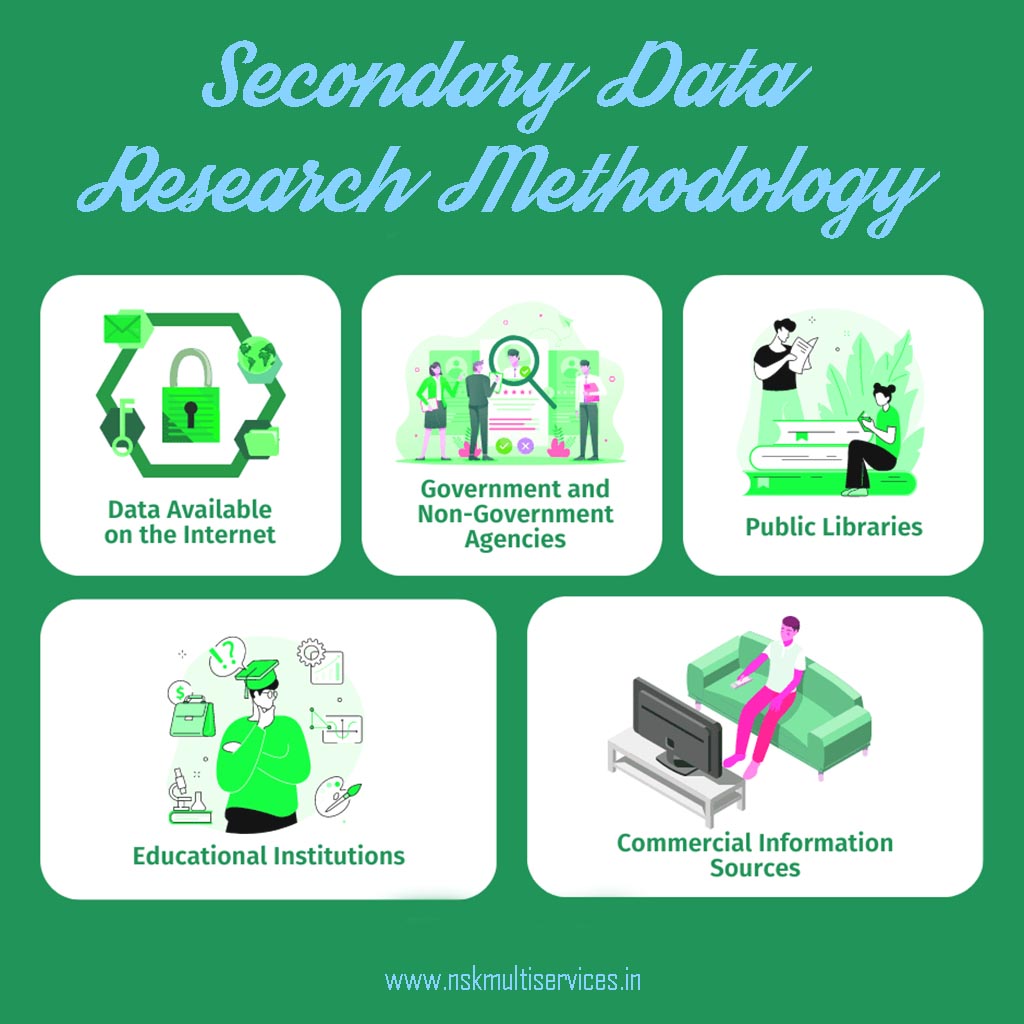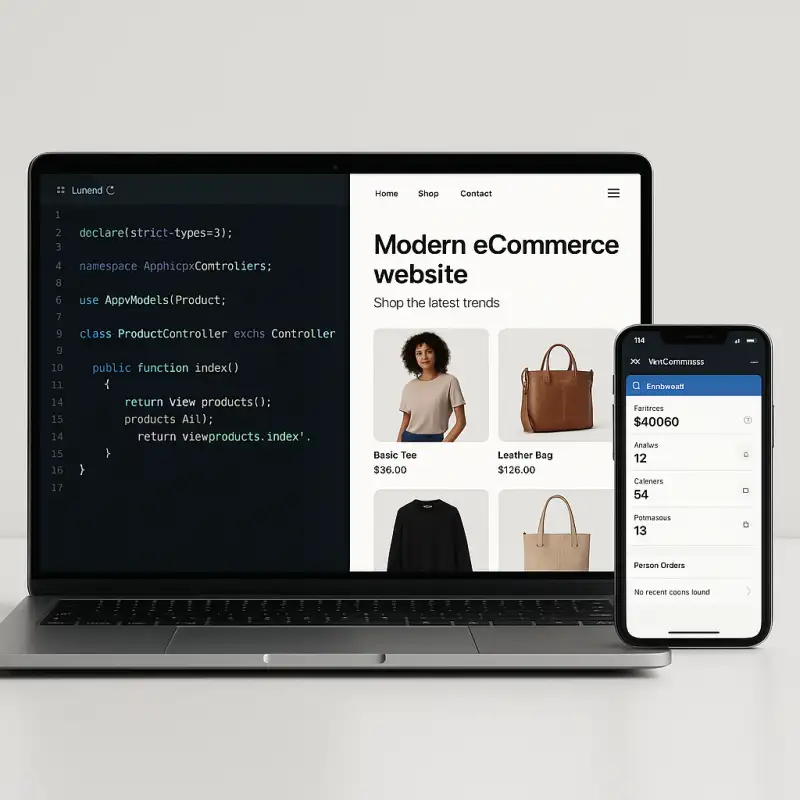Secondary Data in Research Methodology - NSK MultiServices

1) Secondary Data in Research Methodology
In the research methodology, data is often the cornerstone upon which valuable insights are built. While primary data collection methods have traditionally been the focus of many research endeavors, secondary data has gained prominence as a rich source of information. Secondary data, whether it’s collected by another researcher or organization, offers numerous advantages that can significantly enhance the research process. In this article, we learn about secondary data, exploring its definition, sources, and the many ways it can be used in research methodology.
2) What is Secondary Data?
Secondary data, as opposed to primary data, is information that has been previously collected, processed, and made available for other researchers to use. This data is collected by individuals, organizations, or agencies for purposes other than the research in question. Secondary data can come in various forms, such as documents, reports, publications, datasets, and more. Researchers can use this existing data to answer their research questions, saving time and resources compared to conducting new data collection.
Related Articles
- Primary and Secondary Data in Marketing Research
- Insights from a Digital Marketing Survey
- How to Conduct Market Research for Business Success?
- Who needs a Website?
- How to do Keyword Research for Google Ads
3) Sources of Secondary Data
a) Government and Public Records –
Government agencies [List of Government agencies in India] regularly collect data on a wide range of subjects, from demographics and economics to health and education. This data is often freely available to researchers and can be a goldmine for a variety of studies.
b) Academic Journals and Publications-
Scientific journals and academic publications are rich sources of data. Researchers can analyze data presented in these publications to support their own studies or conduct meta-analyses.
c) Private Organizations-
Many private companies and organizations maintain large datasets for various purposes, including marketing, sales, and customer behavior. Such data can be invaluable for market research and business studies.
d) Surveys and Polls-
Data from surveys and polls conducted by organizations like Gallup, Pew Research, or local research firms can provide valuable insights into public opinion, social trends, and more.
e) Historical Data-
For studies involving historical analysis, archives, newspapers, and old records can serve as secondary data sources, shedding light on past events and trends.
4) Advantages of Using Secondary Data
- Time and Cost-Efficiency: One of the primary benefits of using secondary data is the time and cost savings. Researchers can quickly access and analyze existing data, eliminating the need for extensive data collection and surveying.
- Large Sample Sizes: Secondary data often provides access to substantial sample sizes, enabling researchers to draw statistically significant conclusions and make broader generalizations.
- Longitudinal Analysis: Historical datasets can allow researchers to perform longitudinal studies, tracking changes and trends over time.
- Cross-Validation: Secondary data can be used to cross-validate findings obtained from primary data sources, increasing the robustness of research.
- Ethical Considerations: In some cases, using secondary data can be more ethical than collecting new data. This is especially true when working with sensitive or personal information.
5) Challenges in Using Secondary Data
While secondary data is a valuable resource, it does come with certain challenges, such as:
- Data Quality: The quality and accuracy of secondary data can vary. Researchers must critically evaluate the source and methodology used in collecting the data.
- Data Availability: Not all data is publicly available, and some sources may charge for access to their datasets. Researchers may need to navigate legal and financial obstacles to obtain the data they require.
- Fit for Purpose: Secondary data may not always align perfectly with a researcher’s specific research questions, requiring adaptations and careful analysis.
FAQs – Frquently Asked Questions
Q. 1. What is secondary data in research methodology?
Secondary data refers to information that has been previously collected and is available for use in research, as opposed to primary data that is collected specifically for a particular study.
Q. 2. Where can researchers find secondary data for their studies?
Secondary data can be sourced from various places, including government records, academic journals, private organizations, surveys, polls, and historical records.
Q. 3. What are the advantages of using secondary data in research?
Advantages include time and cost efficiency, large sample sizes, the ability to conduct longitudinal analyses, cross-validation of findings, and potential ethical considerations.
Q. 4. How does secondary data save researchers time and resources?
Researchers can skip the time-consuming data collection process and immediately start analyzing existing data, reducing the need for additional surveys or experiments.
5. Can secondary data be used for historical research?
Yes, secondary data can provide valuable historical context and is instrumental in identifying patterns and trends in historical studies.
6. What are some potential sources of bias in secondary data?
Bias can arise from the original data collection methods, data processing, or changes over time. Researchers should critically evaluate data quality and reliability.
7. Are there ethical considerations when using secondary data?
Yes, ethical concerns can arise, especially when dealing with sensitive or personal information. Researchers must respect data privacy and confidentiality.
8. Can secondary data be used in various fields of research?
Absolutely. Secondary data is a versatile resource used in diverse fields, including social sciences, economics, public health, marketing, and historical research.
9. How can researchers ensure the relevance of secondary data to their specific research objectives?
Careful evaluation of the source, methodology, and context of the data is essential to ensure it aligns with the research questions at hand.
10. What’s the role of secondary data in cross-validating research findings?
Researchers can use secondary data to validate or corroborate findings obtained from primary data sources, increasing the reliability and robustness of their research outcomes.
Conclusion
Secondary data is a powerful tool in the realm of research methodology. It offers researchers the opportunity to explore a vast array of topics, tap into extensive datasets, and significantly reduce the time and cost associated with data collection. However, it is crucial to approach secondary data with a discerning eye, considering the source, quality, and relevance to one’s research objectives.
By using the potential of secondary data, researchers can expand the horizons of their studies, gain new perspectives, and contribute to the ever-evolving landscape of academic and practical knowledge. Whether you’re an academic scholar, a market researcher, or a social scientist, the world of secondary data is brimming with untapped potential waiting to be explored.
About
Nandeshwar
Nandeshwar is a versatile professional skilled in digital marketing and App/Web development. With 5 years of experience and a Diploma in Computer Engineering, they excel in crafting effective marketing strategies and building dynamic websites. Specializing in content marketing, they drive results for clients while creating visually stunning websites using WordPress, Laravel, PHP and Flutter. Beyond work, they stay updated on industry trends and enjoy sharing insights.



